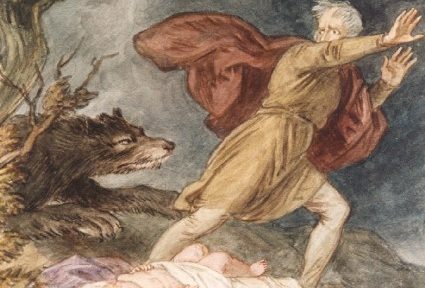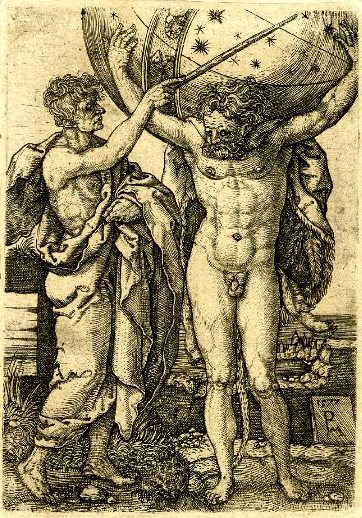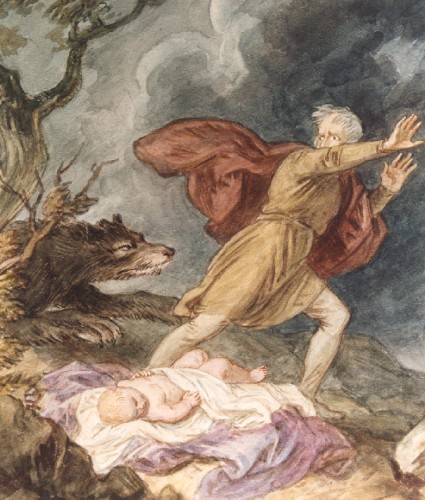This post was contributed by Fiona Ratcliffe, who is currently studying for an MA Victorian Studies at Birkbeck’s Department of English and Humanities. Here Fiona writes about her internship experience at the Guildhall art Gallery from January to March 2016.
The internship was carried out as a module on the MA programme – a popular element of the course in which successful students have the opportunity to spend a term working with one of London’s Victorian cultural institutions, gaining first-hand experience of working in the cultural sector and using their host institution’s archives to develop a unique research project. Previous interns have worked with the Dickens House Museum, and the Salvation Army Heritage Centre and Archive.
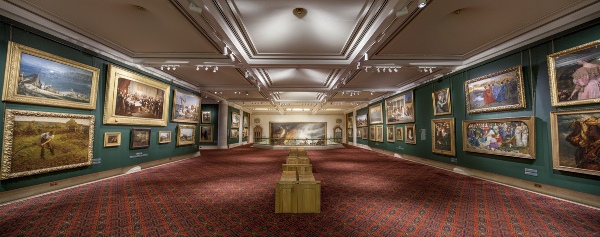 Day One
Day One
Having cleared Security (a permanent fixture at galleries today), I meet the small, industrious team behind the scenes at the Guildhall Art Gallery – Katty (Curator), Andrew (responsible for the Roman Amphitheatre) and Jeremy who, as General Manager, handles the practical running of the Gallery.
Katty warns that finding desk (and computer) space is a constant challenge and I will inevitably have a variety of work-places, including perched in a corner of the small shop, gaining an insight into that essential income-generator for museums.
My first task is to familiarise myself with the preparations for the forthcoming exhibition, Victorians Decoded, opening in September. This exhibition will commemorate the 150th anniversary of the successful Transatlantic telegraphic cable-laying, demonstrating how artists subsequently re-imagined time and space, responding to their changing world.
In addition to artworks from the Gallery’s collection, five loans have been requested from other institutions. So far, the Royal Holloway Picture Gallery has confirmed the loan of Edward Landseer’s Man Proposes, God Disposes with the stipulation of a T-Crate for transportation – leading to challenges of storing the crate, space being at a premium here.
Early Weeks
Switching tasks (a constant theme ensuring plenty of variety), I am asked to prepare visitor-friendly information on the ‘Fire Judges’ for a Museum of London exhibition on the Great Fire. This involves circumnavigating the archives – a tiny cupboard space – to research the portraits of the judges who processed property and boundary claims prior to rebuilding the City.

Guildhall Art Gallery
The Gallery is delightfully intimate and peaceful but being within the City’s municipal building, the Corporation’s civic presence is constantly apparent – particularly when the whole building goes into ‘total shut down’ (a security measure) while The Sun hosts The Millies, an awards ceremony commending military bravery, and I realise I may not be able to leave or return at lunchtime. In my haste to get a sandwich, I bump into Rod Stewart, Jeremy Clarkson and Boris Johnson – as a friend asked later, “What sort of gallery is this?”
It’s time for the de-installation of the exhibition “No Colour Bar”. Paintings are shrink-wrapped and swiftly taken through a side-exit by a specialist removal firm – with Katty’s eyes on every move whilst the door is temporarily de-alarmed.
Katty explains that loaned artworks are covered by ‘Nail to Nail’ insurance with the borrowing gallery insuring the painting for loss or damage for the duration. Surprisingly, the borrower also funds and organises any requisite conservation or frame refurbishment.
Exhibitions have astonishingly lengthy lead-times and London galleries are currently collaborating on exhibitions up to 2023 – including a London-themed one for which I am asked to source suitable artworks from the collection database. The remit is not just Victorian art, which is refreshing, but does lead to ‘St. Paul’s overload’.
In Week 3, Sonia (the Principal Curator) departs on maternity leave and we join the Conservation team for her farewell tea-party. Rossetti’s La Ghirlandata aloofly surveys us tucking into cake, and I notice just how exposed a painting appears without its frame. Excitingly up close to the brushstrokes, I am shown various tears and some ‘tenting’ where it has lifted from the canvas.
Middle Weeks
A memorable day! I join the planning meeting for Victorians Decoded and am asked to help with research in preparation for exhibit captions – a steep lesson in brevity. I’m struck during the meeting how much events-planning and budget control predominates – along with the logistics underpinning the positioning of cables and procurement of objects such as a telegraph machine. We didn’t discuss the art at all!
Heading towards spring, the gallery is becoming busier, visited by schools, interest-groups and individuals, many joining the in-house talks. One of the guides tells me that she’s a retired City financial journalist and had looked for voluntary work but could only find weeding in Epping Forest, so just called in at the gallery and was welcomed as a guide. Her groups are usually small and it often turns into a two-way exchange so she’s continually learning too.
In five years, footfall has increased from 30,000 to 100,000, reflecting a widening demographic – younger, international with rising tourism in the City, and also more Londoners increasingly culture-seeking in their own city. Exhibitions are vital – a way for a lesser-known gallery to achieve publicity, although a recurring tension between free access and charging for exhibitions persists.
It’s Friday afternoon and we’re surveying the new Robin Reynolds’ 2016 artwork of London commissioned by the Gallery to hang next to Visscher’s 1616 cityscape. As a commemoration of Shakespeare’s 400th anniversary, Reynolds has incorporated references to all 37 plays but we’re not here trying to identify them. Unfortunately, the canvas is ‘bulking’ where the artist has tried to fix a central rip, at eye level. The conservators arrive, armed with various canisters, but are unable to do a quick fix –it will have to be dismantled, repaired and re-framed as quickly as possible by this time-pressed team.
Final Week
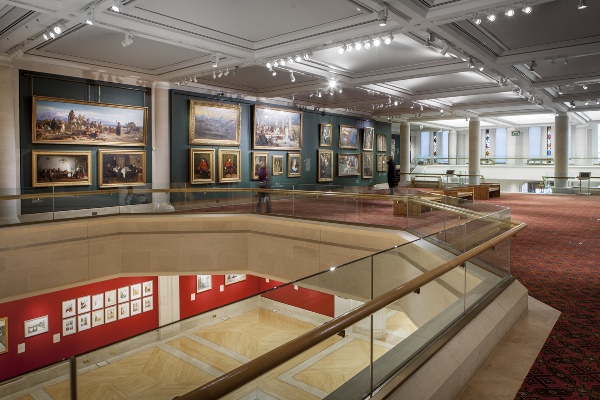
Inside Guildhall Art Gallery
Another exhibition, Martin Parr – Unseen City, begins and there is a flurry of media activity. Katty’s role requires multiple skills – preparing speeches for opening nights, coordinating hanging and lighting, and dealing with both the press and the local authority the Gallery belongs to, who approve the exhibitions but may still express criticisms with the outcome.
Preparations are escalating for Victorians Decoded, with the room layout established six months ahead. A balancing-act is required to ensure the technical aspects of telegraphy are comprehensible, whilst providing substance for visitors specialising in art and science. A subsequent challenge will be to fill the spaces in the permanent collection where paintings have moved to the exhibition. Katty describes it as a four-dimensional puzzle: satisfying the aesthetic, chronological & contextual, scale & size, and overall fit.
On my last day, Katty gives visiting VIPs a private viewing of two Pre-Raphaelite artworks held in store – Millais’ sketch of Lorenzo and Isabella (being watercolour the picture can’t be regularly exposed to UV for long periods of time, which precludes it from being on permanent display) and charcoal drawings from Holman Hunt’s sketchbook. Both the guests and I feel utter wonder at having access to these hidden gems – a true privilege of working behind the scenes in this very special gallery.
The internship has altered my perception of artworks and I’m now far more aware of their vulnerability. Visiting an exhibition will never be the same again, having witnessed the in-depth forward-planning and bustle behind the scenes. Ultimately, however, the experience has opened up new avenues and inspired me to pursue research opportunities with galleries after graduation.
Find out more


